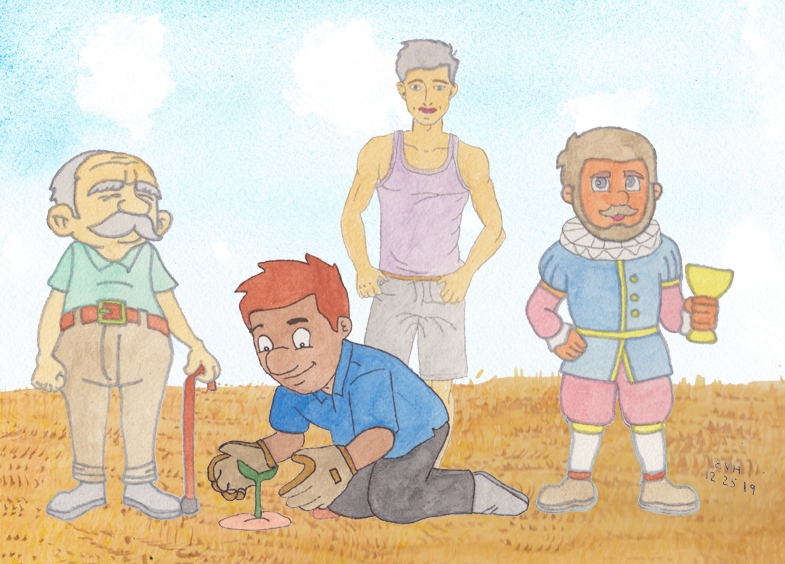
Jataka 200
Sādhusīla Jātaka
Right Virtue
as told by Eric Van Horn
originally translated by William Henry Denham Rouse, Cambridge University
originally edited by Professor Edward Byles Cowell, Cambridge University
This story does not hold up very well for a modern audience, but at that time polygamy was very common. Thus in this story a father is trying to decide to whom to give all of his daughters. But part of the equation of that time is that a man had to be able to afford multiple wives, therefore this usually only happened to wealthy men. In fact there are many stories about men working hard to become successful enough to afford even one wife. That was the social order of the day, although admittedly it was an extremely sexist society. The moral of this story is, however, supposed to be that virtue is to be valued over physical appearance, age, and nobility.
“One is good.” The Master told this story while he was at Jetavana, it is about a brahmin.
This man, we are told, had four daughters. Four suitors wooed them. One was fine and handsome, one was old and well advanced in years, the third a man from a noble family, and the fourth was good. He thought to himself, “When a man is settling his daughters’ futures, to whom should he give them? The handsome man or the older man, or one of the other two, the highly born man or the virtuous man?”
No matter how much he thought about it, he could not decide. So he thought he would bring the matter to the Supreme Buddha. He would surely know. Then he would give the girls to the most suitable man.
So he had a quantity of perfumes and garlands prepared as offerings, and then he went off to visit the monastery. Saluting the Master, he sat on one side and told him the situation. Then he asked, “To which of these four should I give my daughters?” To this the Master replied, “In days gone by, as now, wise men asked this question. But now that rebirth has confused your memory, you cannot remember what happened.” And then at his request the Master told this story of the past.
Once upon a time when Brahmadatta ruled in Benares, the Bodhisatta was born as a brahmin’s son. When he came of age, he went off to receive his education at Takkasilā University. When he returned he became a famous teacher.
Now there was a brahmin who had four daughters. These four were wooed by four persons as told above. The brahmin could not decide to whom to give them. “I will ask the teacher,” he thought, “and then I will decide to whom they should be given.” So he went to the teacher and repeated the first couplet:
“One is good, and one is noble. One is handsome, one is old.
Answer me this question, brahmin: Of the four, which best appears?”
Hearing this, the teacher replied, “Even though there be beauty and the like qualities, a man is to be despised if he fails in virtue. Therefore, beauty is not the measure of a man. Those that I favor are the virtuous.” And in explanation of this matter, he repeated the second couplet:
“Good is beauty. To the aged show respect, for this is right.
A noble birth is good. But virtue - virtue, that is my delight.”

Figure: Choose the Virtuous Man
When the brahmin heard this, he gave all his daughters to the virtuous man.
When this discourse was over the Master taught the Four Noble Truths, at the conclusion of which the brahmin attained stream-entry. Then the Master identified the birth: “This brahmin was the brahmin then, and I was the famous teacher.”
